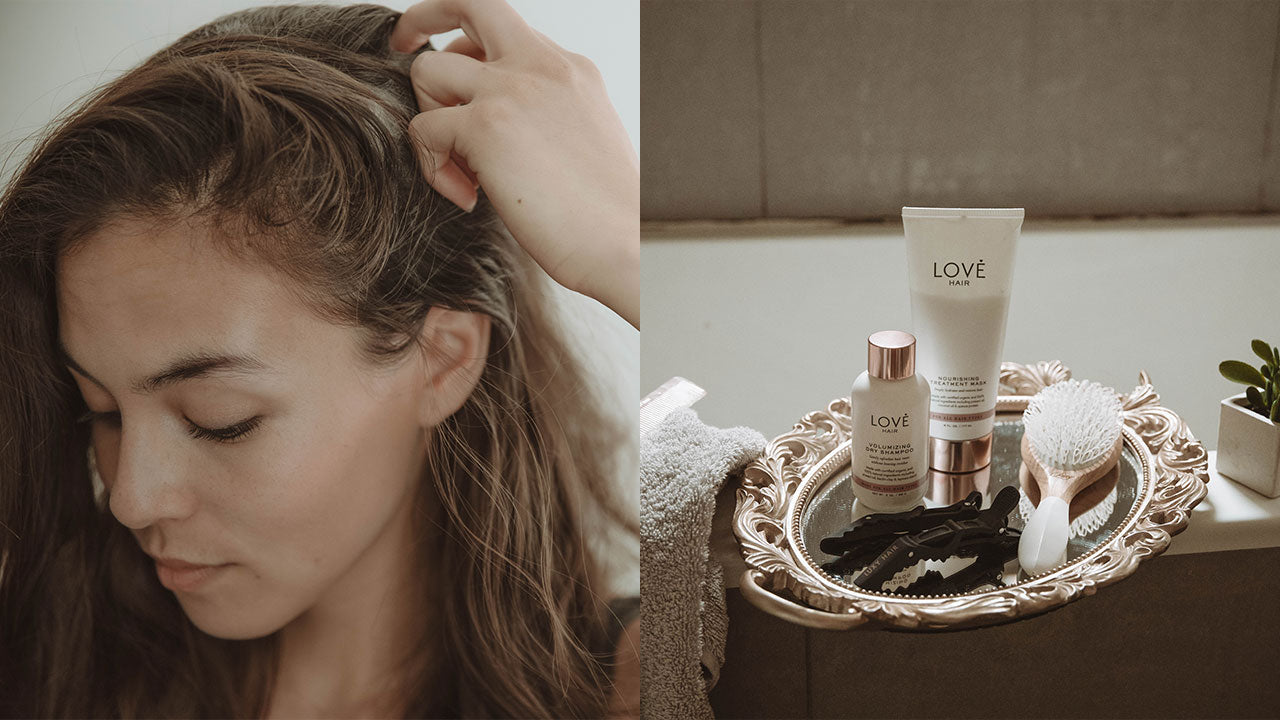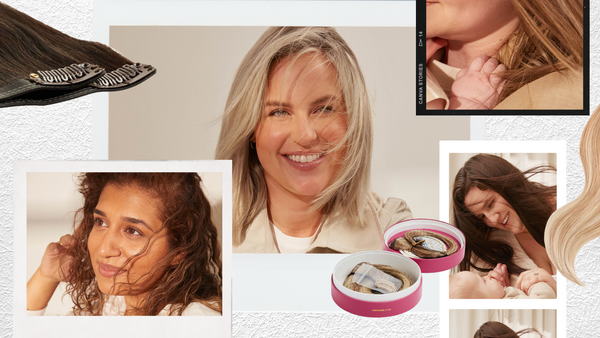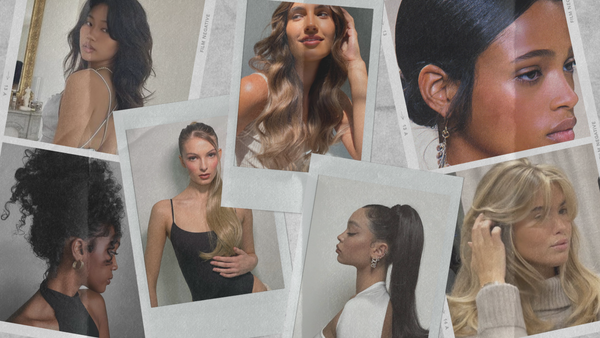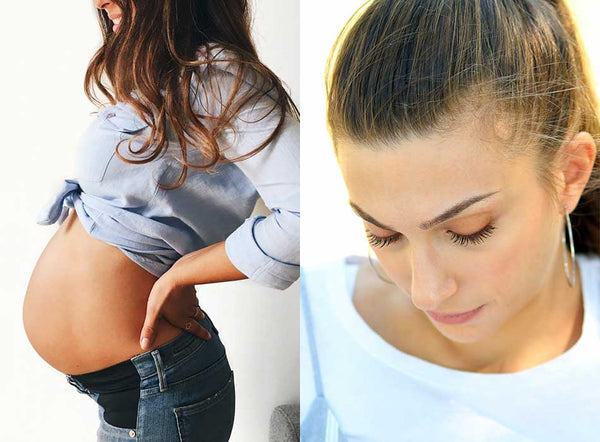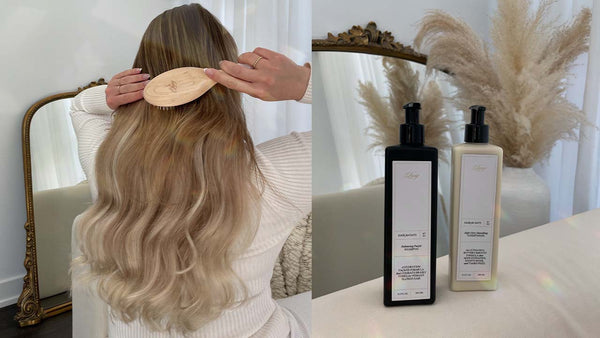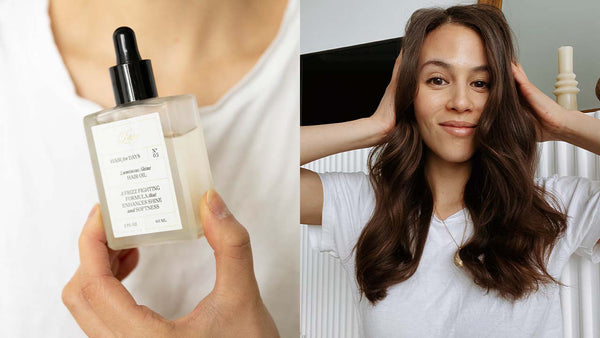Are you constantly waging a battle against greasy hair? If you frequently look like you have landed head-first in a bucket of butter, don't give up hope. Here is a guide that will show you how to train your hair to be less greasy. Yes, you can teach your sebum-seeping follicles to produce less oil and, finally, transform your hair type from "oily" to "normal." Here's how.

How to train your hair
1. Shampoo Sparingly
You are likely wondering how to make your hair less oily and how difficult it will be. The good news is that the process is much less complicated than you may expect. As strange as it may sound, the more you wash your hair, the greasier it can become. Yes, shampoo can strip your hair of its oils, making it produce more oil. This means that by over-washing your hair, you are actually training it to become an efficient sebum-manufacturing machine. And, in order to reverse this problem, you need to resist the urge to scrub those strands.
So, just how often should you be reaching for the shampoo bottle? It is recommended that you try to decrease your washes down to once every two to three days. Some even suggest limiting shampoos to twice per week.

2. Use a clarifying shampoo
If you have reduced your shampooing regime to once or twice a week, you will likely want to give your hair a thorough cleaning. A clarifying shampoo will do the trick nicely, washing away product build-up and any other icky things that are clinging to your locks. Remember, clarifying shampoos are powerful, so limit their use to twice a week.
When opting for a more traditional shampoo, it is important that you avoid products that will weigh your hair down and make it look "slick." Give a wide berth to any shampoos that contain proteins, oils, or silicon and opt for shampoos that appear translucent rather than creamy.
Dry shampoo is an invaluable tool when it comes to figuring out how to train your hair to produce less sebum. A dry shampoo will enable you to put off washing your hair a little bit longer. If your hair is starting to look a tad bit...um...buttery, but it's not yet your wash day, applying some dry shampoo to your roots will help. Not only will it help you avoid that sebum sheen, but it will enable you to have more time between washes, which will help to show your hair who's boss and train it more easily.

3. Keep on conditioning
Some people erroneously believe that you don't need to condition greasy hair. Wrong. Conditioning is an important part of how to train your hair to become less oily. First, it is important to apply conditioner from the middle of the shaft down to the ends, avoiding the scalp. And, second, it is best to choose a conditioner that has moisturizing properties. This will tell your scalp's sebaceous glands that your hair has enough moisture, so they don't need to produce as much oil.
4. Go warm, then cold
Water temperatures can also impact the health—and greasiness—of your hair. Overly hot water is a big no-no as it dries out your hair and scalp, triggering it to produce more oil. It is best to start out with warm water as it will open your cuticles and cleanse, and switch to cooler water to close your cuticles once again.

5. Give your hair a treatment
Everyone deserves a treat every now and then, and your hair is no exception. And the perfect treat for your hair is a treatment. Here are a few products—including some commonly found around the house—that you can use to help your hair shed its excess grease.
Apple cider vinegar is known for its innate ability to restore your scalp's PH balance. Schwarzkopf recommends diluting apple cider vinegar into a 1:8 solution and pouring it through your hair. Not only can it improve the overall quality of your locks, but it is also much cheaper than manufactured hair treatments. To see if you are good candidate for an ACV hair rinse, read this post.
Baking soda does more than whiten teeth and keep your fridge smelling less funky. It can also remove grease from your hair. Jennifer David, a dermatologist from Northfield, NJ, recommends mixing 2 tablespoons of baking soda with 1/4 cup of warm water, applying it to wet hair, letting it sit for five to ten minutes, and rinsing it out. This shouldn't be done more than once or twice week though.
If you have some talc-free baby powder and your hair is light in color, you can sprinkle some onto your roots and rub it in. This will act like a dry shampoo and soak up some of your roots' excess sebum.
Another fabulous product for banishing the greasies is sea salt. It soaks up sebum like a sponge and makes your hair easier to style between washes.
These products are hairstyle lifesavers that will make figuring out how to train your hair to be less greasy so much easier. The transformation can be challenging, so anything that will help dry up that part-line while your sebaceous glands adjust is worth trying out.

6. Find a brushing balance
Everyone loves the feel of a good brushing. If you have oily hair, you need to remember one thing: not enough brushing leads to a buildup of oil on the scalp, but too much brushing can stimulate greater oil production. That's why it is important to find your hair-brushing sweet spot.
A paddle brush, preferably one with boar bristles, is ideal. And remember to brush your hair from the top of your head to the very ends, ensuring that you are distributing the oils to the entire strand.
If your brush closely resembles a disheveled hedgehog, overrun with hair and God-only-knows-what-else, it is time to give it a thorough cleaning. Annie Chiu, a dermatologist at Manhattan Beach's Derm Institute, warns that a buildup of dust, old product, and bacteria (blick!) will transfer to clean hair and make it look greasy. And, if that brush is beyond cleaning, it's time to get a new one.

7. Eat your greens
You've likely heard the old adage, "you are what you eat." The truth is that eating greasy foods on a regular basis can make your hair greasy. Fruits and veggies and plenty of water are key ingredients when striving to improve your hair health and lose that oil slick at the top of your head. Adding vitamin B2 and B6-rich foods to your diet like seaweed and leafy greens will aid in the decrease of sebum production. Kale, spinach, or kelp will do the trick nicely.
8. Blow and curl
If your hair is being stubborn and resisting your efforts to train it to not be greasy, there are a few styling tricks that you can use to assert your dominance. The heat from your blow dryer can help dry up some of that unwanted sebum. Just be careful not to use too much heat and damage your hair.
In case you are still struggling with how to make your hair less greasy, you will want to examine your daily styling regime. Are you addicted to straightening your locks to a perfectly flat sheen? Well, you may want to stop. The flatter your hair lies on your head, the more it comes in contact with oil. Yikes! Curly hair, however, is better at masking your hair's oiliness.
And, there are tons of hairstyles that are perfect for those days when your hair is feeling extra slick. Whether you wish to try a bun or a fishtail braid, mastering a few easy styling tips will better help you navigate this transition period.

If you were under the impression that greasy hair was simply your cross to bear and that you would have to endure a lifetime of looking like your head is slathered in lard, this article should give you hope. You can train your hair to produce less oil and, instead, take on a healthy, normal sheen. All you need is a little patience, a willingness to make some changes to your hair routine, and an ability to resist that shampoo bottle -- no matter how loudly it screams your name.
Written by: Kimberley Laws
